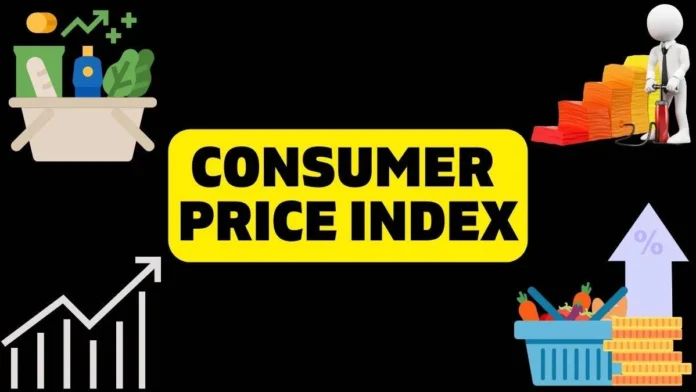Introduction
Inflation in the U.S. climbed to 3% in January, reinforcing expectations that the Federal Reserve may delay interest rate cuts. The latest Consumer Price Index (CPI) report from the Bureau of Labor Statistics indicates a 0.5% monthly increase, marking the fastest rise since August 2023. This unexpected surge has led to renewed concerns about the central bank’s ability to bring inflation down to its 2% target, adding uncertainty to economic policy decisions and affecting both financial markets and consumer sentiment.
Key Takeaways from the January CPI Report
- Core Inflation Remains High: Core CPI, which excludes volatile food and energy prices, rose 0.4% monthly and 3.3% year-over-year, suggesting inflationary pressures remain persistent.
- Grocery Prices Surge: A 15.2% spike in egg prices due to an avian flu outbreak contributed significantly to the rise in food costs, adding to household expenses.
- Gasoline Costs Rise: Fuel prices increased 1.8% from December, though they remain 0.2% lower year-over-year, demonstrating continued volatility in energy markets.
- Housing Inflation Stalls Progress: Shelter costs rose 0.4% in January and 4.4% annually, a significant component of overall inflation that continues to affect affordability.
- Consumer Purchasing Power Declines: The rise in inflation has reduced real wages, making everyday expenses more challenging for average Americans, especially those on fixed incomes.
Federal Reserve’s Response to Inflation Data
Federal Reserve officials, including Chicago Fed President Austan Goolsbee, acknowledged that the inflation spike was “sobering“”” but advised against overreacting to a single report. Fed Chair Jerome Powell emphasized that while progress has been made, the central bank is not yet ready to lower interest rates, citing concerns about the possibility of inflation remaining elevated longer than anticipated.
What This Means for Interest Rates
- The Fed aims to maintain restrictive monetary policy to achieve its 2% inflation target, ensuring economic stability over the long term.
- Traders have pushed back expectations for rate cuts from September to December, reflecting shifting sentiment about inflation’s trajectory.
- Some economists suggest that another rate hike may be possible if inflation persists, though opinions remain divided on this potential action.
- Mortgage rates are likely to remain elevated, impacting potential homebuyers and slowing down the real estate market as affordability concerns grow.
How Inflation is Impacting Consumers
Rising Costs in Key Sectors
- Grocery Bills: Prices increased 1.9% year-over-year, with eggs up 53% annually, affecting household budgets significantly.
- Travel & Transportation: Airline fares and automobile insurance rose by 2%, increasing travel costs for commuters and vacationers alike.
- Housing & Rent: While housing costs were expected to cool, January data showed no significant relief, making affordability a major challenge for renters and homeowners.
- Energy Bills Increase: Households are also experiencing higher energy costs, with some regions reporting an 8% rise in utility expenses, particularly impacting low-income households.
- Healthcare Costs Climb: Medical expenses, including prescription drugs, saw a 2.5% increase year-over-year, making affordability a growing concern for many Americans.
- Consumer Sentiment Weakens: Rising prices have dampened confidence in economic stability, leading some consumers to cut back on discretionary spending and focus on essentials.
Economic Uncertainty & Policy Changes

With President Donald Trump starting his second term, new policies on tariffs, tax cuts, and deregulation could influence future inflation trends. Some economists worry that supply-side shocks may further complicate the Fed’s inflation strategy, leading to an even more uncertain economic landscape.
Key policy shifts could include:
- Higher import tariffs that may raise prices on essential goods, potentially worsening inflation.
- Potential tax reforms aimed at boosting growth but possibly increasing the deficit, leading to greater economic volatility.
- Deregulation efforts that could lead to inflationary pressures in certain industries, impacting costs for consumers and businesses alike.
Market Reaction
Following the CPI report:
- U.S. stocks and bonds fell due to concerns over prolonged inflation and tighter monetary policy.
- Investors adjusted their expectations, pricing in delayed rate cuts, which could impact corporate investment and market sentiment.
- The bond market reacted with higher yields, reflecting increased uncertainty over future rate decisions and economic direction.
- Stock Volatility Increases: Major indices experienced significant swings as traders assessed the implications of continued inflationary pressures.
The Road Ahead: Inflation Outlook
Experts like Jonathan Wright, former Fed economist, believe inflation is becoming “stuck around 3%”, making further progress toward the 2% target more challenging. However, there is still confidence that inflation will gradually decrease over time as economic conditions stabilize and supply chains improve.
Factors That Could Influence Future Inflation Trends:
- Global Supply Chain Stability: Any disruption in shipping routes, such as those affected by geopolitical tensions, could push prices higher and prolong inflationary pressures.
- Labor Market Dynamics: If wage growth continues outpacing inflation, it may contribute to prolonged price pressures, making it harder for the Fed to meet its targets.
- Oil Price Fluctuations: A potential increase in crude oil prices could drive up costs across multiple sectors, including transportation and manufacturing, increasing consumer costs.
- Geopolitical Risks: Rising global tensions, particularly in key trade regions, could exacerbate supply chain disruptions and fuel additional price hikes.
- Consumer Behavior Adjustments: As prices remain elevated, shifts in spending patterns could further influence economic trends and inflation expectations.
Final Thoughts
The January CPI report underscores that inflation remains unpredictable, and the Fed is likely to keep interest rates elevated until sustained progress is evident. For consumers, higher prices in essential sectors mean continued financial strain and shifting spending priorities. For investors, market volatility may persist as the Fed evaluates its next moves, with potential implications for stocks, bonds, and housing markets. Businesses will need to navigate these uncertain conditions while strategizing for potential economic shifts and adjusting to evolving consumer demands.
As the year unfolds, monitoring key indicators like job growth, corporate earnings, and consumer spending trends will be crucial in determining how inflation evolves. Stay informed as new economic data unfolds to understand how inflation trends impact your financial future.


